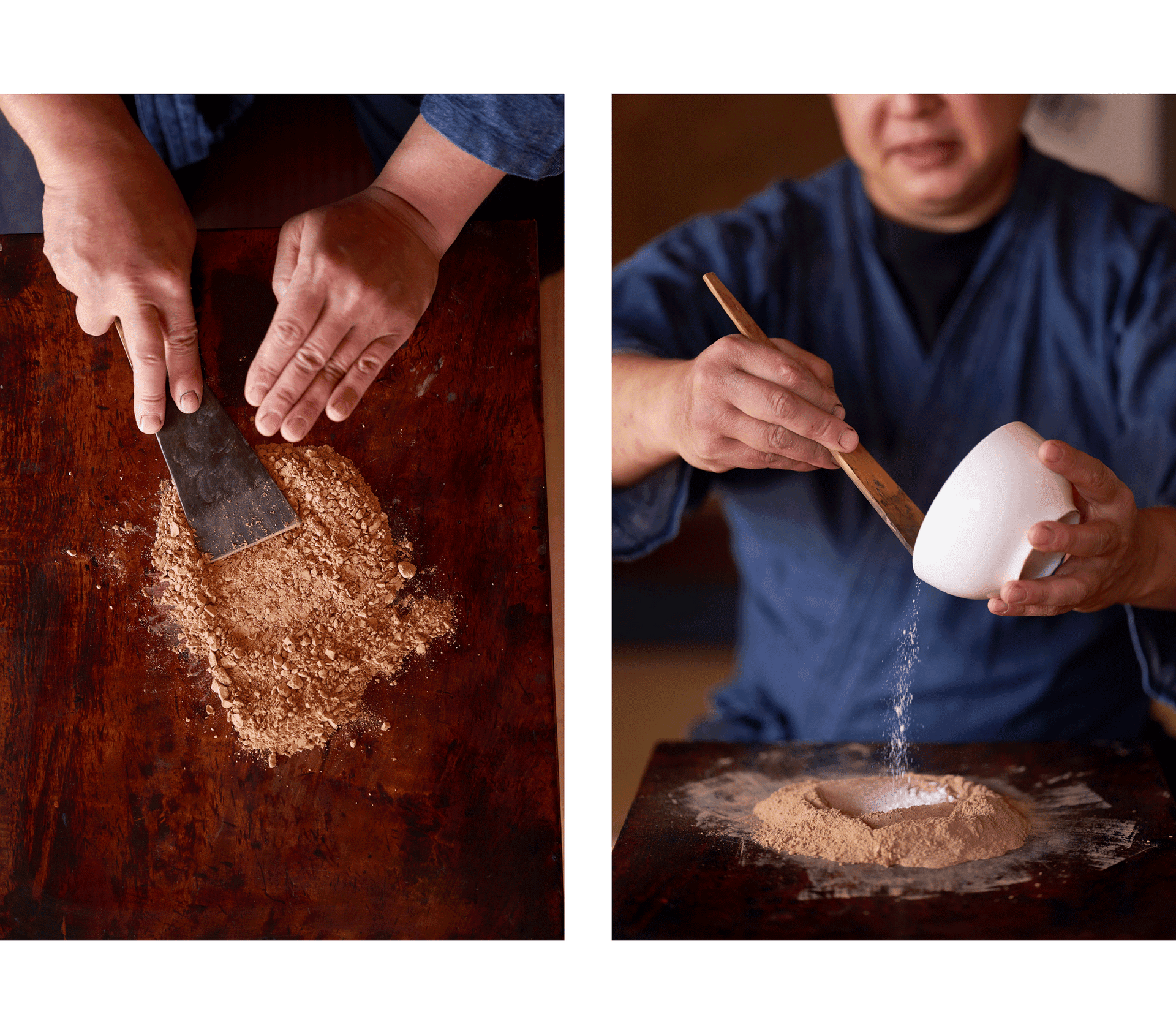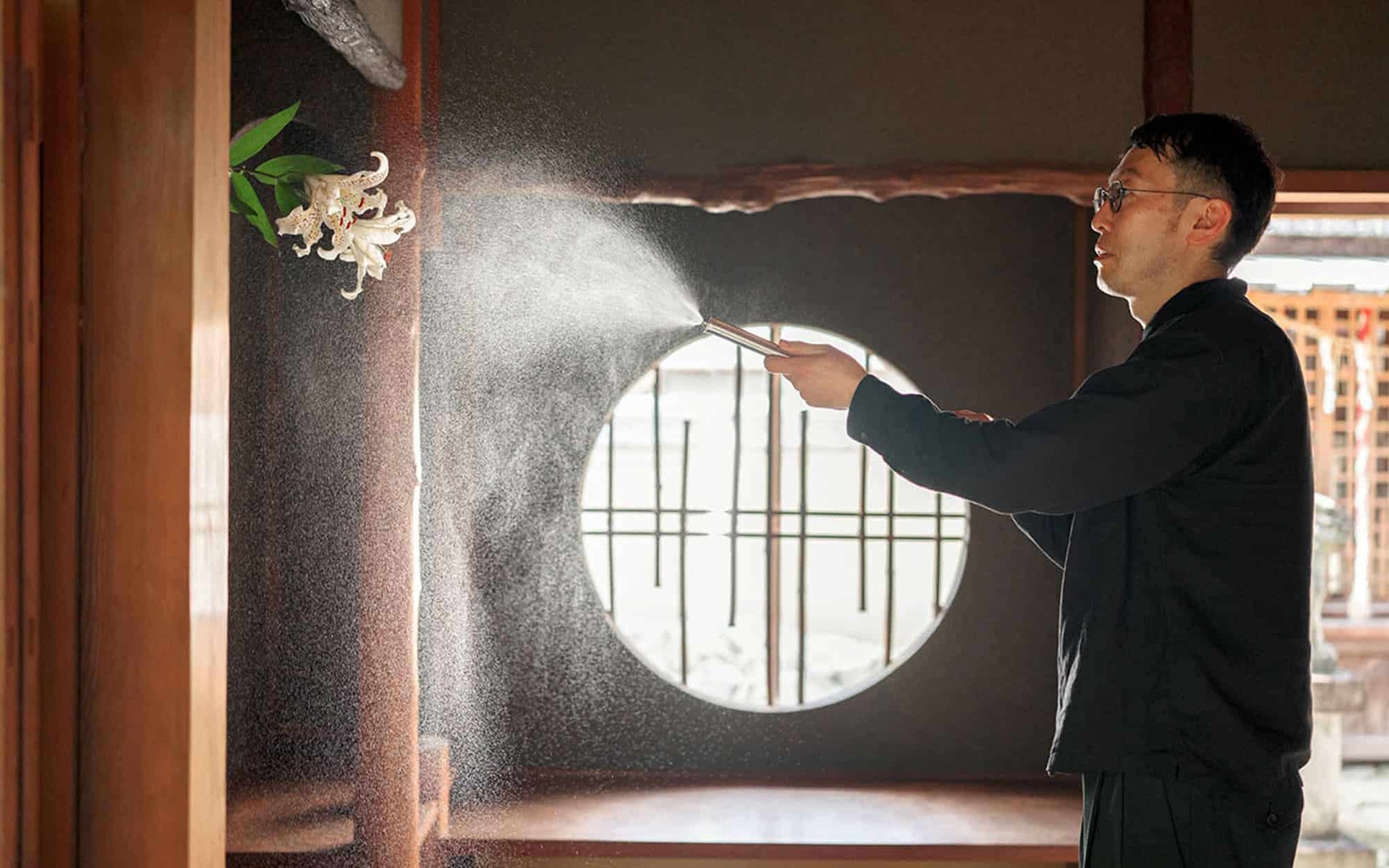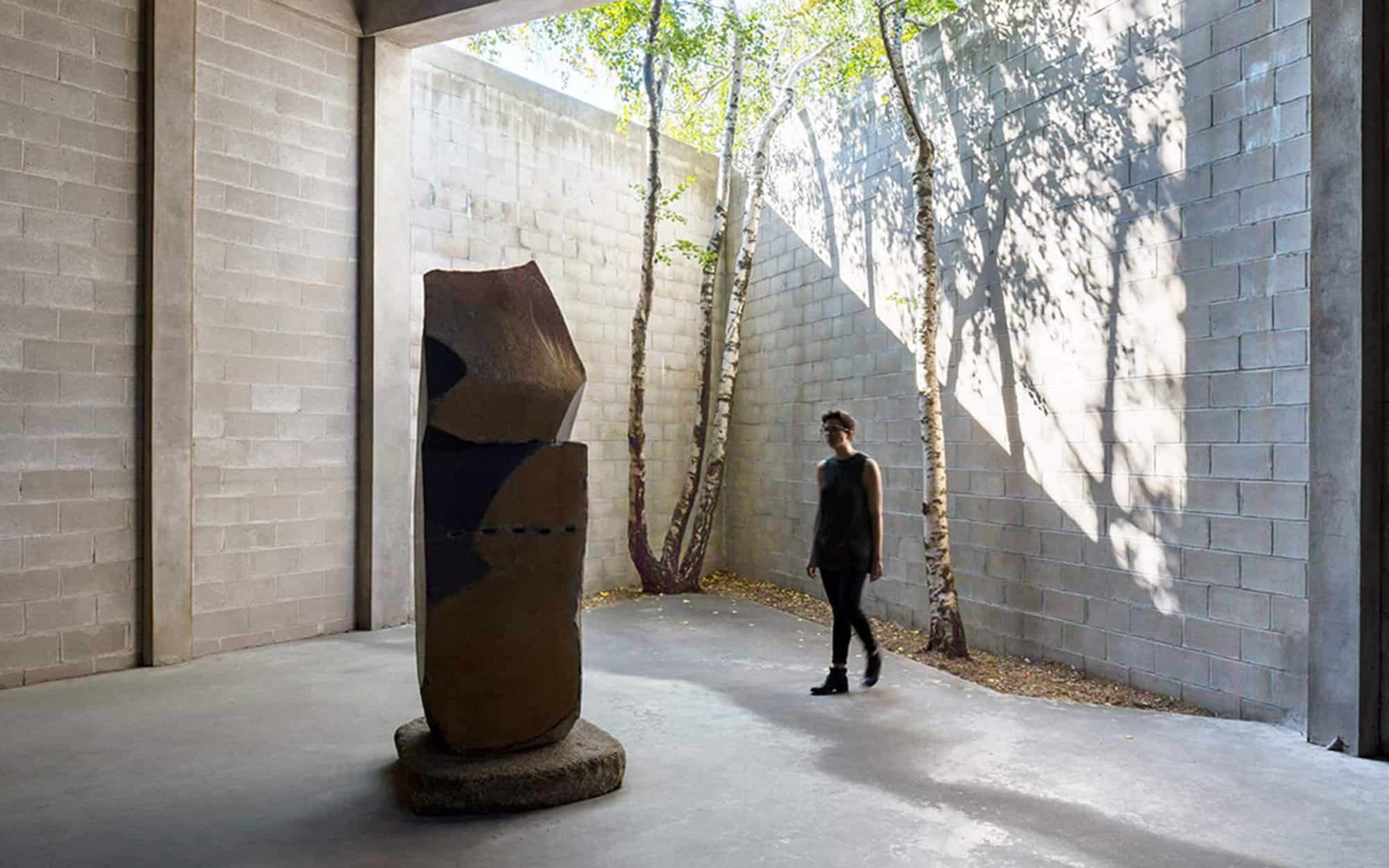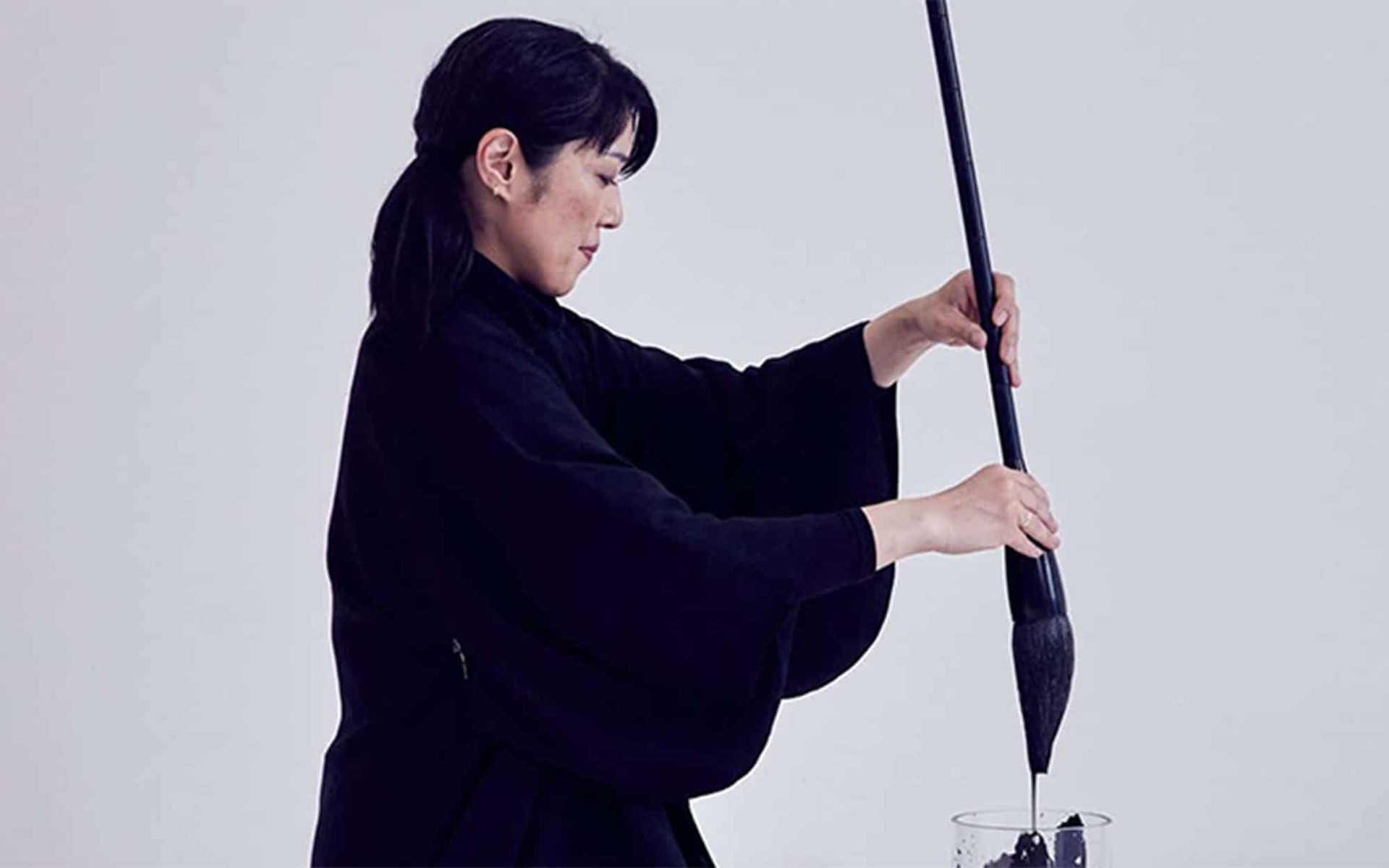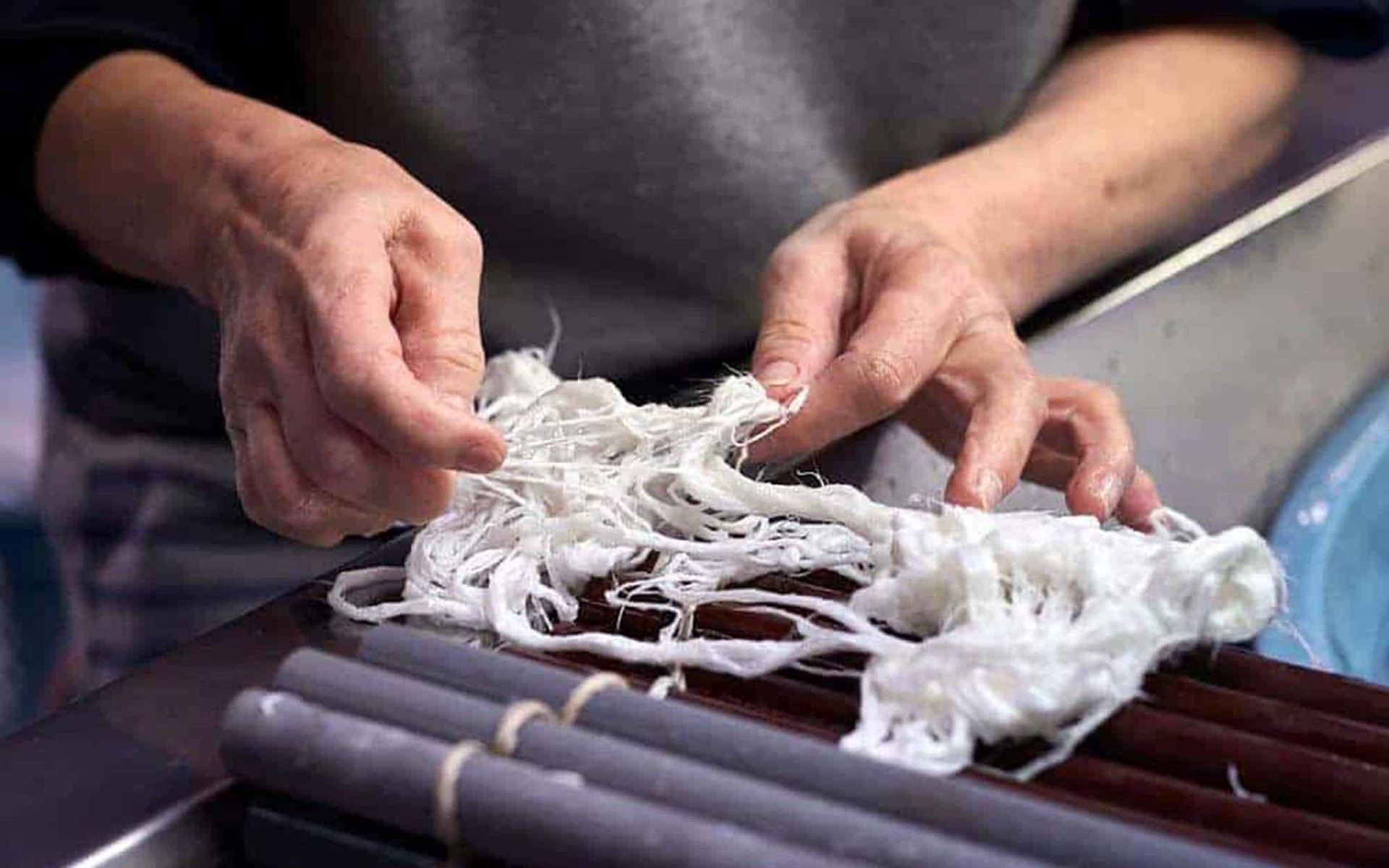INSPIRE
THE TIMELESS BEAUTY OF URUSHI,
JAPANESE LACQUERWARE
Over millennia, the production of urushi art—an artistic discipline that uses lacquer as a medium—has evolved from a traditional Japanese craft into a highbrow art form celebrated for its use of natural, long-lasting resources. As the work of award-winning artist Naoya Takayama proves, it shares a few commonalities with the commitment Mazda pours into its head-turning designs.
“Japanese lacquerware, coated with thin layers of urushi tree sap… has been used to protect and decorate objects combining art and function for 10,000 years.”
Touch it, and it feels as soft as skin. Gaze at its surface, and it mesmerizes with a deep luster. Japanese lacquerware, coated with thin layers of urushi tree sap, is the pinnacle of ancient tradition and craftsmanship. Now, with the world turning to environmentally sustainable products, there’s never been a better time to celebrate urushi art.
Urushi sap, taken from a type of tree indigenous to East Asia, has been used to protect and decorate objects, combining art and function, for 10,000 years. An urushi-painted surface is resistant to corrosive acids and alkalis, giving it tough durability, but because it dries by absorbing the air’s moisture, it gives off a delicate glow. “That’s why the coating seems moist and soft, and has a unique luster,” says Naoya Takayama, an award-winning urushi artist in Hiroshima. “The skill lies in how you bring out this texture.”
It’s a tricky and patience-testing task: the artist applies dozens of layers of urushi coating, waiting days at a time for each layer to dry before sanding them down to 0.03mm thick. Takayama is lauded for his dexterous take on the akebono-nuri technique, a method that uses black and red gradations over several layers that creates depth to the decoration.
The natural, well-honed talent of an artist can be hard to replicate, but Mazda’s innovative robotic Takuminuri paint technology was designed to do just that. Closely mimicking the movement of a human painter, it can apply colors with remarkable precision. What’s more, 2022 marked the 10th anniversary of Takuminuri and the launch of a new, eye-catching color: Artisan Red. By enhancing the vehicle’s form and providing greater depth, stronger reflections, and, overall, a striking aesthetic, the bold new color emphasizes strength and beauty—just like a piece of urushi lacquerware.
Takayama’s craftsmanship also relies on the hand and eye, an intricate balance of adding colored lacquer and then polishing it. Urushi artists also experiment with what to add to the milky white sap to create a new color or texture. Takayama’s signature ingredient, powdered oyster shell, is sourced locally in Hiroshima. He adds it to his base coating, a crucial layer that makes the finished piece resistant to water and humidity so it won’t erode even if it cracks. “I want these bowls to be used every day, so I pay extra attention to safety,” he says.
The coastline along the Seto Inland Sea doesn’t just offer oyster shells for Takayama—it also fuels his imagination. “I feel at peace when I’m gazing out at the islands out in the ocean,” he says. “The beautiful sunrises and the sunsets provide inspiration for my work.”
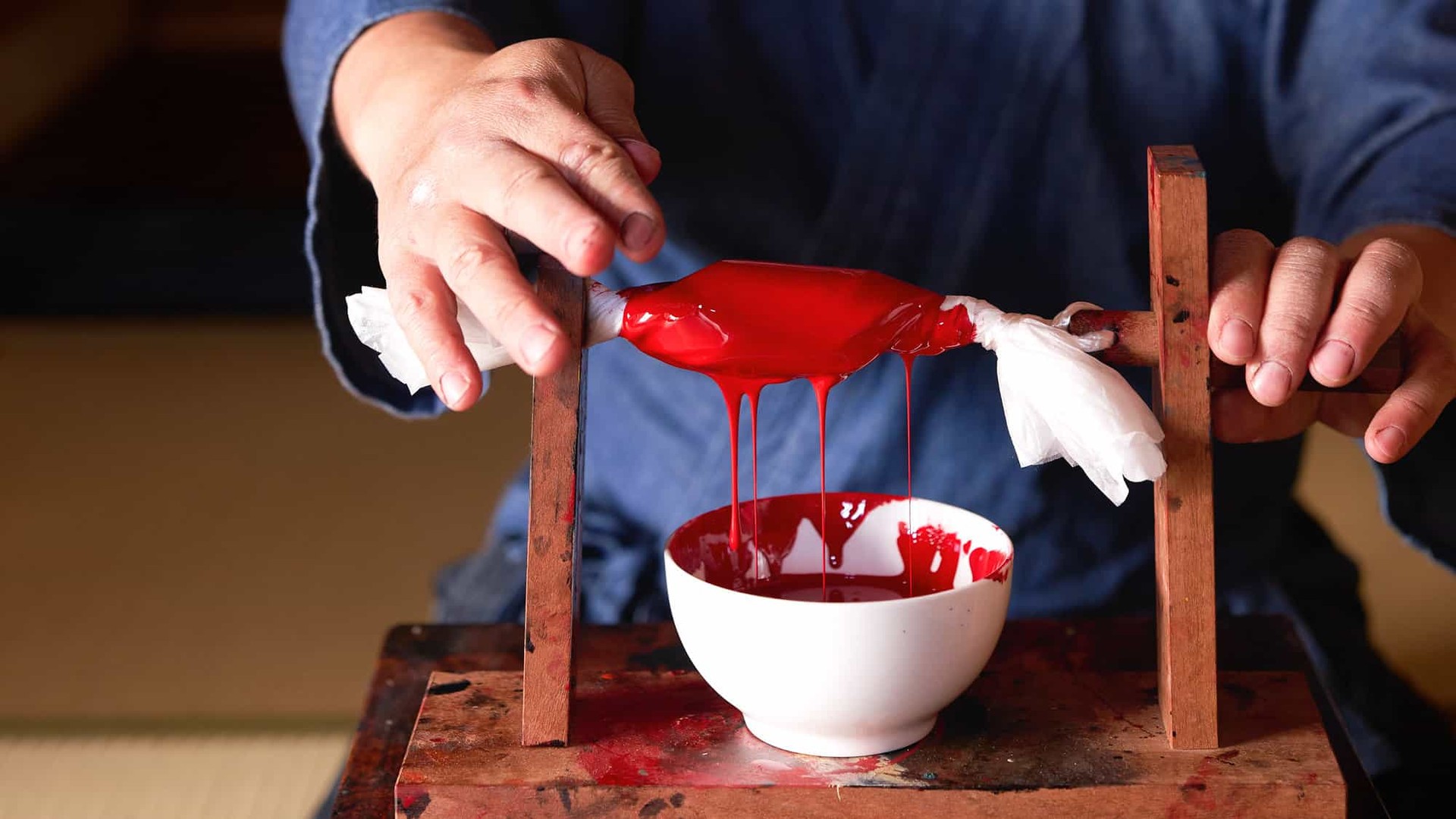
“I want to make new things with timeless techniques.”
naoya takayama
While urushi pieces have been crafted since prehistoric times, Takayama tries not to feel restricted by tradition and recognizes how innovation is key to his design philosophy. “The generations before us have been developing the craft with the future in mind,” he says. “We should also strive to advance the design—I want to make new things with timeless techniques.”
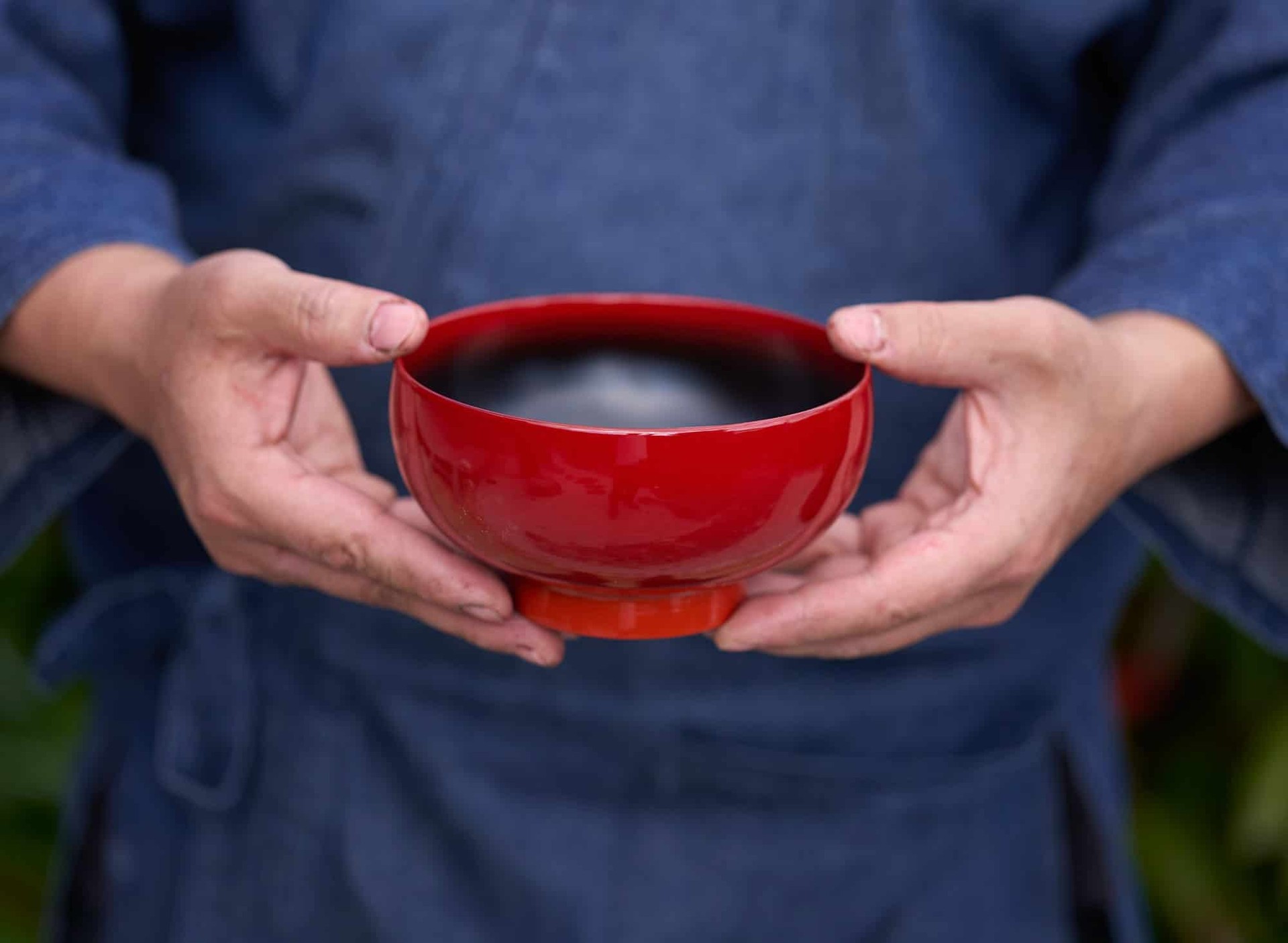
A Product for Our Times
Made from natural materials, Japanese lacquerware is a smart choice for the environmentally conscious. “It’s light and durable, and it can be used every day by both young and old,” Takayama says.
Urushi art embodies the idea, common in Japanese aesthetics, of the work being alive, of possessing an independent vitality. If a piece of lacquerware gets damaged, urushi craftsmen can give it new life.
They mend it using an ancient technique called kintsugi. Taking advantage of the strong adhesive properties of urushi sap, craftsmen can artistically fuse chips and cracks together using gold and other metals, creating a new way of the art form being expressed and perceived.
For those trying out urushi products for the first time, Takayama recommends soup bowls. “Pour hot soup into the bowl, hold it and the heat will transfer gently into your hands,” he says. “Japanese people sip straight from the bowl.”
Urushi in many forms
Check out these two artists for more inspiration on bringing urushi art into your life.
Kazumi Murose
World-renowned urushi artist Kazumi Murose sprinkles coarse powder ground from gold or silver ingots onto an urushi-painted design, to make interior pieces from stationery boxes to cabinets. Murose’s works have been exhibited in top museums such as the Met and the British Museum, but you could also decorate your own home with a maki-e-style piece. “Try jewelry boxes or small bowls,” he says. “They look beautiful displayed in the room.”
Mio Heki
For Kyoto-based artist Mio Heki, the time it takes for the sap to be taken from the tree or for the urushi to dry with each coating is part of the joy of her craft. “The period of waiting is precious, much like waiting for the change of seasons or watching your child grow.” Heki makes urushi jewelry, from earrings to bracelets to hairpins. “The luster of an urushi piece grows the more you use it, so choose something you’ll use every day,” she says.
Words Mariko Kato / Images Irwin Wong

find out more

